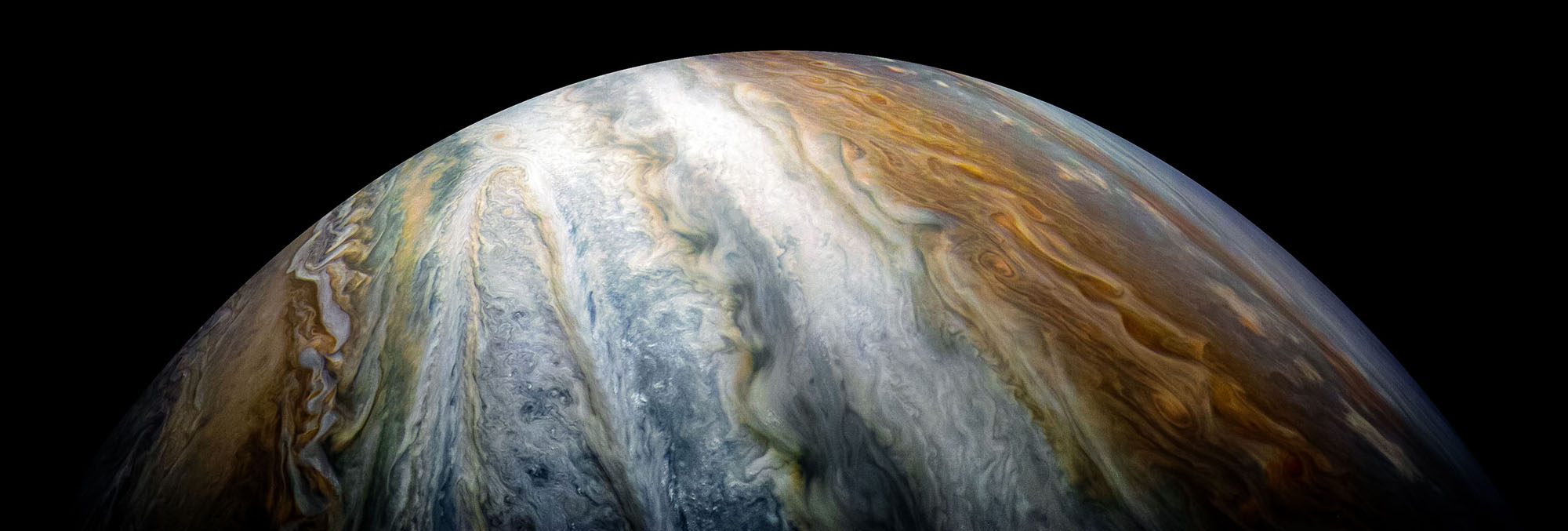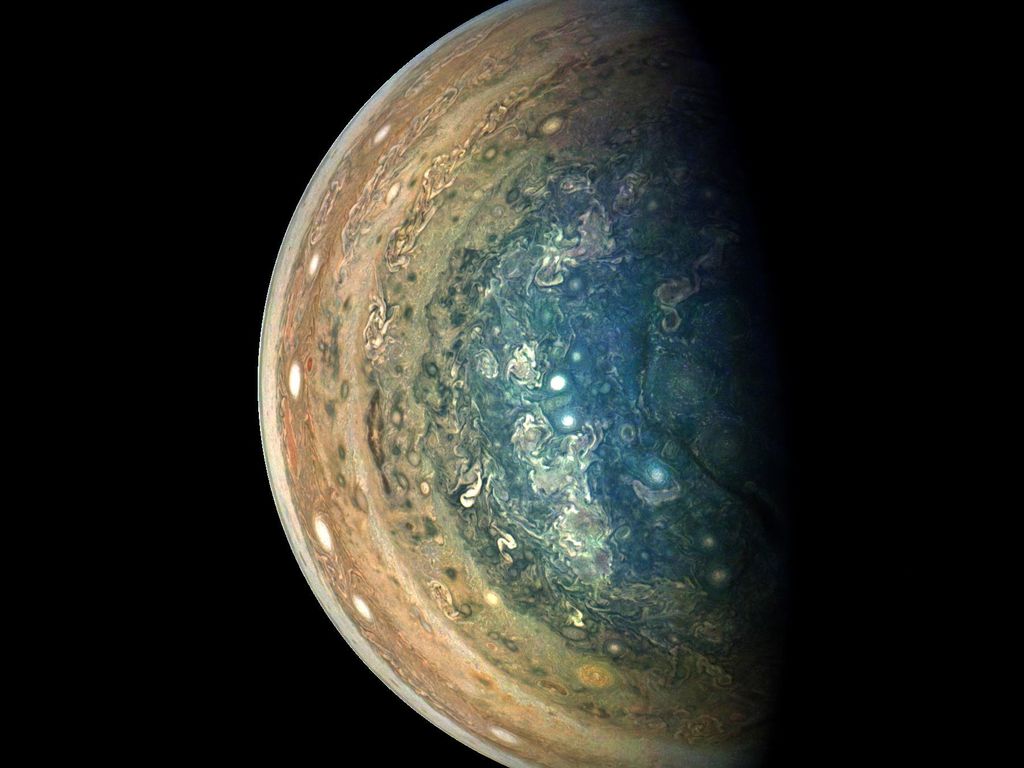Jupiter's Stripes Reveal Stunning Details in New Juno Probe Images

The ribbons of multicolored gas that make up Jupiter's atmosphere are on display in two new images from NASA's Juno probe.
In one of the new images, the ribbons of gas that wrap around Jupiter's equator are shown in stunning resolution, revealing detailed structures in the clouds. With this level of detail, the bands of gas start to resemble solid materials: An orange-tinted region looks like a knotty wood plank, and a speckled, whitish-blue layer looks like a sandy river bottom.
In the second image, the planet's south pole is rendered in bright colors that highlight how the bands of gas remain separate from each other, despite their stormy nature.

The new images were captured by the JunoCam instrument aboard the Juno spacecraft, which makes a close flyby of Jupiter every 53 days. Raw data from the JunoCam is uploaded to the instrument website, and is available to citizen-scientists for processing. The results have been both scientific and artistic. Both images are color-enhanced, so they are not necessarily representative of what would be visible with the naked eye.
The images, which were featured on the main website for NASA's Jet Propulsion Laboratory, were taken on Dec. 16, 2017, less than an hour apart. However, the image of Jupiter's equator was taken from a distance of about 8,453 miles (13,604 kilometers) from the tops of clouds; the image of the south pole was taken at a distance of about 64,899 miles (104,446 kilometers) from the cloud tops.
Follow Calla Cofield @callacofield. Follow us @Spacedotcom, Facebook and Google+. Original article on Space.com.
Get the Space.com Newsletter
Breaking space news, the latest updates on rocket launches, skywatching events and more!
Join our Space Forums to keep talking space on the latest missions, night sky and more! And if you have a news tip, correction or comment, let us know at: community@space.com.

Calla Cofield joined Space.com's crew in October 2014. She enjoys writing about black holes, exploding stars, ripples in space-time, science in comic books, and all the mysteries of the cosmos. Prior to joining Space.com Calla worked as a freelance writer, with her work appearing in APS News, Symmetry magazine, Scientific American, Nature News, Physics World, and others. From 2010 to 2014 she was a producer for The Physics Central Podcast. Previously, Calla worked at the American Museum of Natural History in New York City (hands down the best office building ever) and SLAC National Accelerator Laboratory in California. Calla studied physics at the University of Massachusetts, Amherst and is originally from Sandy, Utah. In 2018, Calla left Space.com to join NASA's Jet Propulsion Laboratory media team where she oversees astronomy, physics, exoplanets and the Cold Atom Lab mission. She has been underground at three of the largest particle accelerators in the world and would really like to know what the heck dark matter is. Contact Calla via: E-Mail – Twitter









